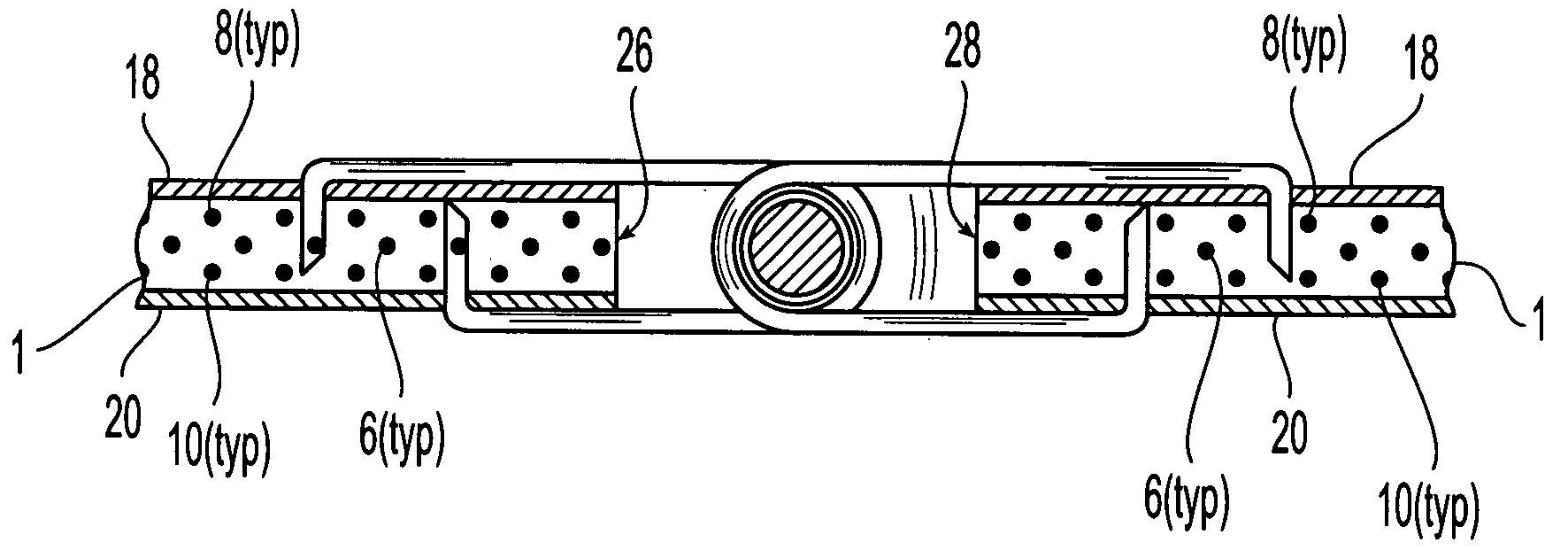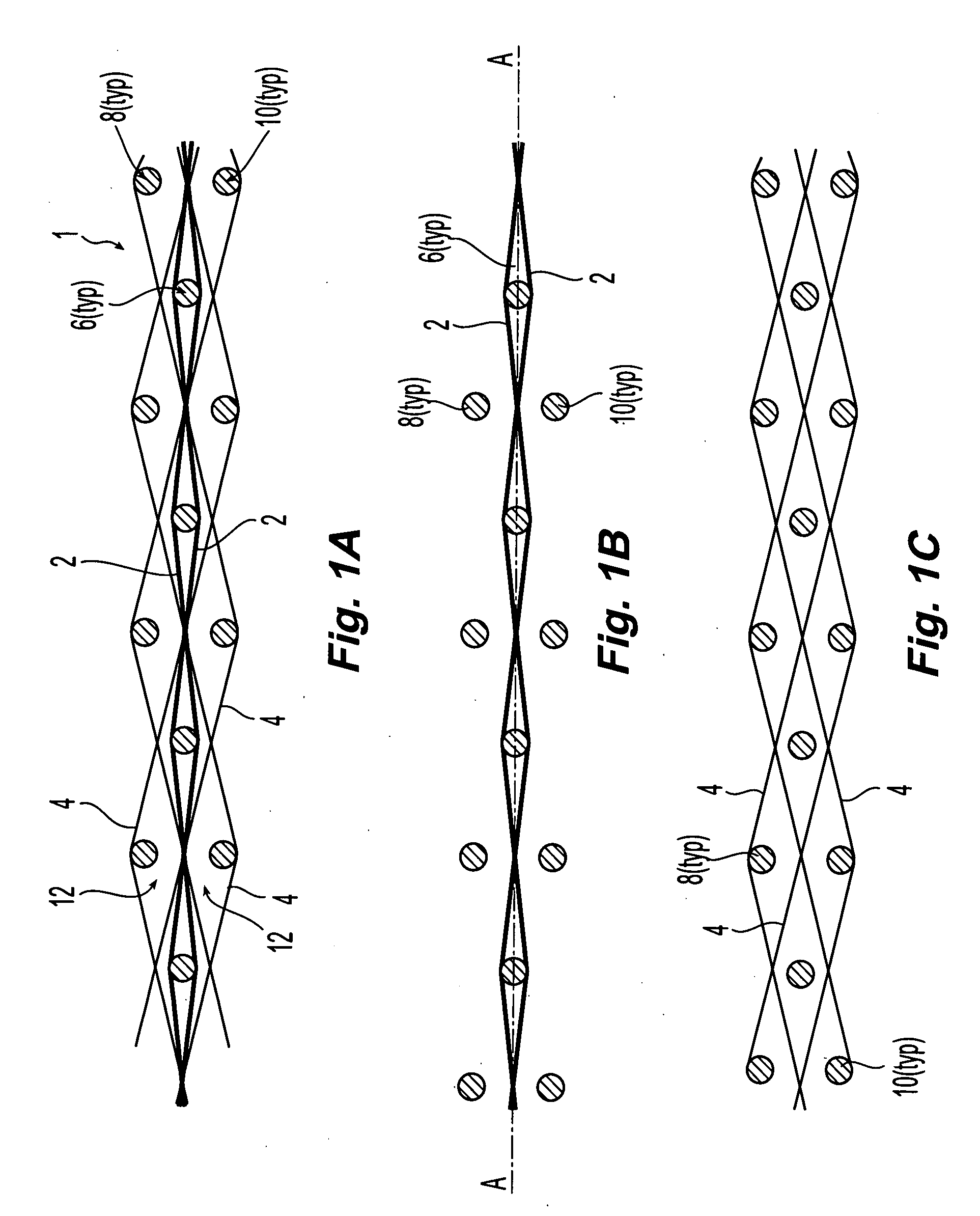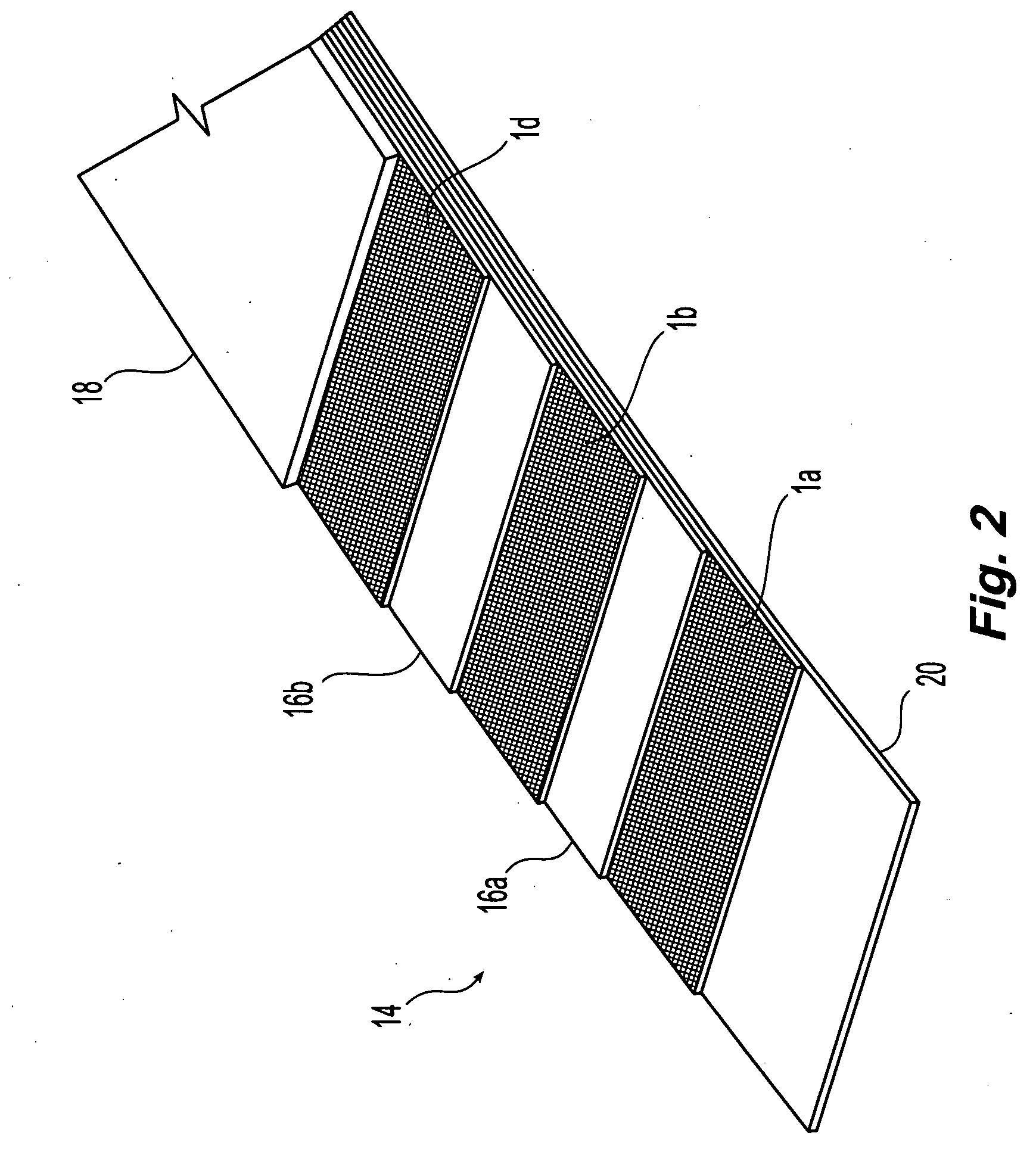Dual crimped warp fabric for conveyor belt applications
a technology of crimping warp weave and conveyor belt, which is applied in the direction of turning machines, textiles and papermaking, synthetic resin layered products, etc., can solve the problems of reducing the total strength of the resulting belt, reducing the flexibility of the belt, and reducing the overall strength of the belt, so as to achieve high strength and high strength. , the effect of improving flexibility
- Summary
- Abstract
- Description
- Claims
- Application Information
AI Technical Summary
Benefits of technology
Problems solved by technology
Method used
Image
Examples
example 1
[0043]A fabric layer according to the invention was constructed in accordance with Tables I, II and III.
TABLE ITwistsMinimumSize# ofTwistperTensileYarn(Denier)PliesDirectionInch(lpf)CentralPolyester10009 (for aS1.8152tensiontotal ofwarps9000denier)BinderPolyester10003 (for aS2.550warpstotal of3000denier)WeftsNylon12608 (for aS1.8178total of10,080denier)
TABLE IICentralCentralTensionTensionBinderWarpWarpWarpBinderWeftWeftCountCrimpCountWarpCountCrimp(EPI)(%)(EPI)Crimp(PPI)(%)STD194.538.030.0122.0MIN18.73.537.427.511.51.5MAX19.35.538.633.512.52.5
TABLE IIIGauge (Inches)Weight (OPSY)STD0.14059.3MIN0.13357.8MAX0.14760.8
example 2
[0044]A fabric layer was manufactured in accordance with Table I, with the following additional characteristics:
TABLE IVWarpBinderFillingGaugeWarpBinderFilling%%%(In.)OpsyCountCountCountCrimpCrimpCrimp0.14060.819.53997.58.751.9
[0045]Natural rubber top and bottom covers having thicknesses of 207 mils and 116 mils, respectively, were applied to a single fabric layer that had previously been RFL treated. Results from testing are shown in Table V below. All testing was performed in accordance with ASTM D378, “Standard Test Methods for Rubber (Elastomeric) Belting, Flat Type.”
TABLE VPhysical CharacteristicResultsAverageTensile Strength, PIW (pounds4150, 4350, 39504150per inch width)Elongation at 330 lbs1.05Tensile Transverse, PIL2330, 24002365(pounds per inch length)Elongation at Break (%)25, 2525Fastener Pullout (PIW);1449Flexco Type F-190E(bolt / plate type fastener)Fastener Pullout (PIW);1660Flexco Type F-R5(hinged / rivet type fastener)Adhesion - Top (PIL)49Adhesion - Bottom (PIL)39Trans...
PUM
| Property | Measurement | Unit |
|---|---|---|
| lengths | aaaaa | aaaaa |
| thicknesses | aaaaa | aaaaa |
| thicknesses | aaaaa | aaaaa |
Abstract
Description
Claims
Application Information
 Login to View More
Login to View More - R&D
- Intellectual Property
- Life Sciences
- Materials
- Tech Scout
- Unparalleled Data Quality
- Higher Quality Content
- 60% Fewer Hallucinations
Browse by: Latest US Patents, China's latest patents, Technical Efficacy Thesaurus, Application Domain, Technology Topic, Popular Technical Reports.
© 2025 PatSnap. All rights reserved.Legal|Privacy policy|Modern Slavery Act Transparency Statement|Sitemap|About US| Contact US: help@patsnap.com



